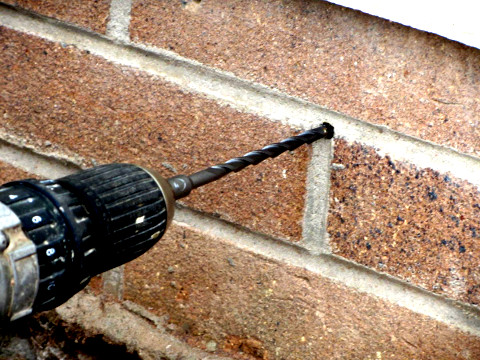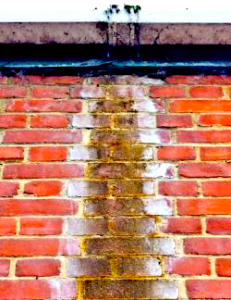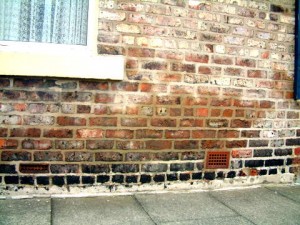Damp proofing is a general term used to cover methods and treatments that are used to prevent damp from being absorbed through walls or floors into the interior of a property.
The importance of effective damp proofing must not be underestimated, as it acts as a long term preventative barrier to decay caused by excess moisture which weakens or damages the structure of a building over period of time.
Why damp proofing a property is important.
If the physical barrier of damp proofing in a property is damaged, absent or bridged in any way it can potentially lead to major problems such as rising damp, dry rot or wet rot withing the building.
Damp and rot can eventually cause problems such as structural damage to your property, so it is essential to identify the signs of damp as early as possible to help prevent any further damage.
Generally a property is constructed with a preventative damp proof course built into the walls, above ground level. This is often known as a DPC (Damp Proof Course) and it is one of several solutions used for damp control in a building.
Damp Proof Course (DPC)
Since there are already laws that required ground-level damp proof courses to be installed in walls, we do not have to go through the laws. There are currently certain parts of the law that all new buildings must include a DPC.
Most properties will have some for of damp proof course evident in walls, roughly 6″ above ground level. The material used in the damp proof course are usually quite resilient and they are often made from slate, bitumen sheet or a plastic membrane.
Damp proof courses do not last forever and after a long period of time, it can deteriorate due to age. Some damp proof courses can crack due to subsidence and both of these issues will allow damp to rise through the wall.
In recent years, “Engineering bricks” have sometimes been used as a damp course in walls because they are so dense that water will not pass through them. The downside is that the surrounding mortar can still allow damp to progress and it ages.
Damp Proof Membrane (DPM)
There is generally a bit of confusion between the damp proof membrane and the damp proof course. A damp proof membrane can be used in conjunction with the damp proof course.
The DPM is a sheet of material that is impervious to water and it is preferably laid in one piece that is place beneath the concrete floor of the property. This prevents any groundwater from seeping upwards through the concrete base, effectively blocking any moisture from entering your property.
The damp proof course however, is a preventative barrier of slate bitumen or plastic members build into the walls of a property, roughly 6″ to prevent damp rising through the walls.
By linking the DPC in the wall to the DPM under the floor, it is possible to seal the inside of the building from the damp and the wet ground around it.
If you do begin to notice peeling pain or wallpaper, discoloration, decaying skirting boards and timber floors or salt stained or crumbling plaster, you may be facing a rising damp problem.
It is possible to install a remedial damp proof course to control damp from rising ground water, but you need to get a professional damp survey done by a certified surveyor in remedial treatment in order to establish the exact cause of the damp.


